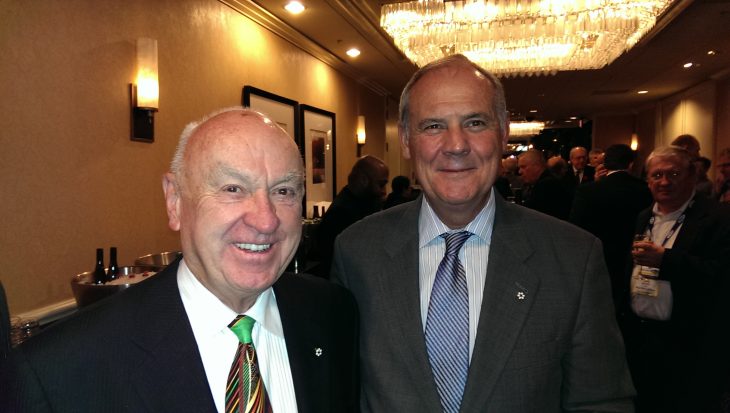
TORONTO – Since “flat is the new up” when it comes to revenue growth in traditional media, it’s time for broadcasters to really think out of the box when it comes to boosting the top and bottom lines, consultant Scott Cuthbertson told delegates of the Ontario Association of Broadcasters Connection 2013 conference.
Kicking off the Tuesday gathering with some sombre numbers – sub-3% (or worse) growth figures of Canadian traditional media companies – the former Bay Street analyst noted that conventional television revenue has been shrinking steadily for seven years but that radio stands out because its growth has been basically flat over the same period of time. While specialty TV growth “still has some legs”, he said, it has begun to level off there, too. As we all know, those ad dollars are moving to new platforms, new ideas.
“Relying on ads,” which conventional TV and radio do, almost exclusively, “may not be the best strategy going forward,” understated Cuthbertson.
He cautioned radio station owners to not rely on their traditional advantages and their stable returns, pointing to the likes of new platforms such as Songza and Pandora, as serious listener fragmentation challenges, not unlike what TV broadcasters have faced with specialty and now even more with online platforms.
What radio owners do have – and they must act to protect it – is radio frequency spectrum. These are the same radio waves used by mobile phone companies who say repeatedly that they need new spectrum to provide next generation service (plus governments earn billions auctioning licenses). So beware, he said, “not necessarily everyone believes that the best use of your FM spectrum is an oldies station.”
Besides pushing into new platforms and making sure listeners can interact with your brands any way they wish, broadcasters must look at alternative (some really alternative) strategies and use their spectrum to deliver more than just music and talk to consumers. How about carrying data from point to point and capitalizing on the rapidly growing machine to machine communications segment?
“FM bandwidth carries data,” said Cuthbertson, so use that stream to generate more revenue. A station could co-ordinate with a local car dealer and sell a value added package where a listener’s car could display or play a message from their garage saying it’s time for service – delivered over the FM band. Closer relationships could be forged between stations, retailers and customers through location-based marketing where members of a “listeners club”, for example, could be sent immediate deals via their mobile phones when those phones use their GPS to detect they are in a mall.
Cuthbertson then went further, saying FM radio waves can even be used to relieve pressure on the electricity grid. Last year, the Consumer Electronics Association created a new standard (CEA 2045) which standardized communications interfaces for all electric appliances (fridges, air conditioners, etc.). The times those are turned on and off can be automated and optimized to save people money and could “cheaply and unnoticeably optimize gigawatts of power without sacrificing privacy, directly addressing what was a $167 billion market in the U.S. last year,” he said. “We believe it is best powered by FM radio RDS (radio data system).” This signalling would be done while FM continues to deliver its popular news, talk and music. That wouldn’t go away..
Now it should be noted, too, that the new company Cuthbertson works for as CFO, e-Radio Inc. is in the business of facilitating just what he described – and it also employs former CHUM Radio broadcast operations head Duff Roman as its EVP broadcast operations.
Cuthbertson also admitted than on their own, none of these new ideas “are going to deliver dump trucks full of money” to broadcasters’ doorsteps, but with the traditional ad market flat or worse as the future approaches, hope that it will bounce back “is not a strategy,” he added.
“I expect time and engagement fragmentation to get worse in the years ahead as content options and ways to consume them continue to grow and the digital generation grows up and gets targeted more,” he explained. And while loyalty clubs, rewards and other active online options to go with listening will help retention, broadcasters must think more broadly to generate new, strange sources of growth.



